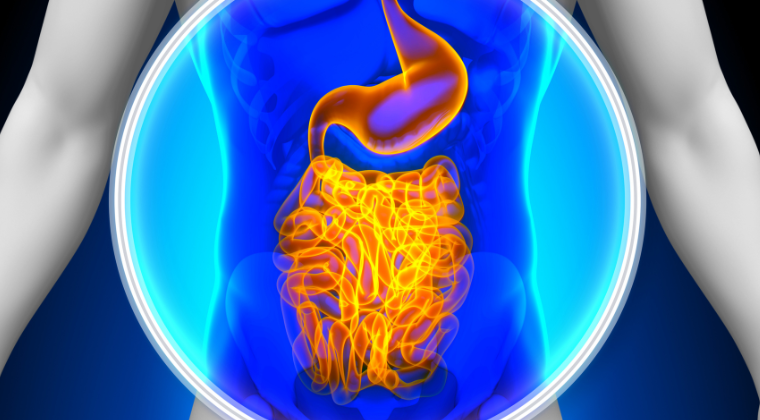Navigating Exercise-Induced Gastrointestinal Syndrome
As a Nutritionist or Dietitian, you’ll likely encounter clients grappling with Exercise-Induced Gastrointestinal Syndrome (EIGS), whether they are fitness enthusiasts, endurance athletes or seasoned professionals. Research indicates that 30–50% of endurance athletes face gut issues, highlighting the widespread impact of EIGS.
The symptoms — cramps, bloating, pain, diarrhea and nausea — go beyond discomfort. They can hinder athletic performance, affect overall health and wellbeing, and even increase the risk of under-fueling. By delving into the complex relationship of the gut-brain axis, we gain insight into how it impacts EIGS and how we can assist clients in better managing these symptoms.
The Gut-Brain Axis and Exercise-Induced Gastrointestinal Syndrome
The gut-brain axis serves as a communication highway between the diverse ecosystem comprising the gut microbiome and the central nervous system. During intense exercise, this relationship becomes crucial in maintaining balance within the body and supporting overall health and wellbeing. The gut’s interaction with the brain influences various processes, including immune responses, neurotransmitter production and gut permeability—all of which are closely tied to EIGS.
Microbiome Influence on Exercise-Induced Gastrointestinal Syndrome
A healthy gut microbiome can significantly impact the occurrence and severity of GI symptoms during exercise. Here’s how:
- Immune System Modulation: Maintaining a healthy microbiome plays a key role in regulating the immune response, Dysbiosis may increase susceptibility to exercise-induced GI symptoms, especially if travelling in foreign regions.
- Inflammation: Dysbiosis in the gut microbiome may exacerbate inflammation, contributing to increased GI distress during or after exercise.
- Gut Permeability: Changes in microbial composition can impact gut barrier function, influencing GI permeability that can contribute to the risk of GI symptoms.
- Neurotransmitter Production: Microbial involvement in neurotransmitter production, such as the creation of serotonin may affect mood and stress responses, influence the gut-brain axis and exacerbate GI symptoms.
- Fermentation and Gas Production: Microbial fermentation can lead to bloating and discomfort, especially during exercise when blood flow shifts away from the digestive system. This is where dietary modification can become key in moderating the risk of EIGS.
Managing Exercise-induced Gastrointestinal Syndrome with Practical Strategies
Dietary modifications are essential for managing EIGS effectively. As a nutritionist, you play a key role in helping clients understand how their diet impacts their performance and gut health. A low FODMAP diet can reduce gas production and fermentation, minimising symptoms like bloating and discomfort. Educating clients on high FODMAP foods to avoid, such as onions, garlic and legumes, helps them make informed choices. Recommending low FODMAP alternatives tailored to their training needs ensures better digestion and supports their overall health and performance.
Clients can manage exercise-induced gastrointestinal syndrome with your guidance while sustaining energy and achieving their goals.
Unlock Solutions with Compeat Academy’s Exclusive EIGS Course
Compeat Academy offers an exclusive nutritionist course to help you better address EIGS in your clients. Join our community to transform your ‘gut instincts’ into a powerhouse of ‘gut knowledge.’ This comprehensive course delves into the science behind EIGS as well as providing practical strategies to troubleshoot with your clients.
Key features of the exercise-induced gastrointestinal syndrome Course:
- Scientific insights into the pathophysiology and mechanisms of EIGS.
- Practical guidance on troubleshooting EIG symptoms with clients.
- Exclusive Q&A session with Stephanie Gaskell, highlighting the nuances of managing exercise-induced gastrointestinal syndrome symptoms in athletes.
The EIGS course is part of Compeat Academy’s suite of online nutrition courses in Australia, designed to equip nutrition professionals with practical tools and current scientific knowledge. You’ll gain the confidence to address issues like EIGS, enhance client outcomes and expand your understanding of the gut-brain axis and how to optimise microbiome health.
Enrol today to learn strategies for managing exercise-induced GI symptoms, including effective dietary interventions like the Low FODMAP diet for IBS and athletes. Contact us to learn more about our dietitian courses or explore more resources to enhance your practice.



